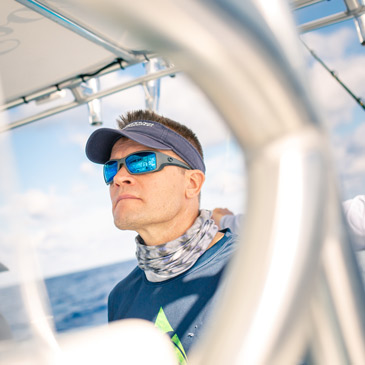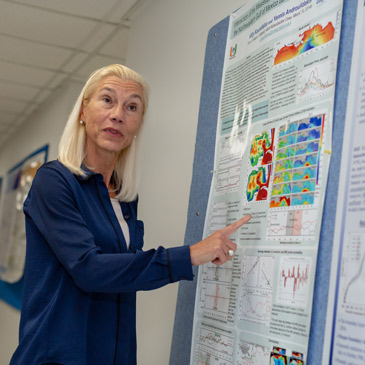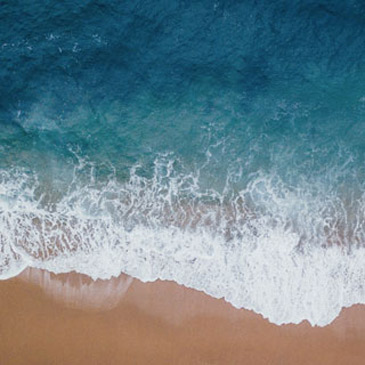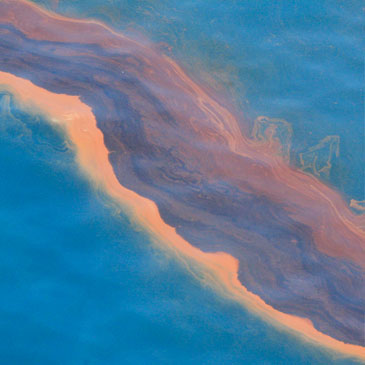by ROBERT C. JONES JR.
UM News
04-19-2019
From America’s East and West Coasts to Europe, they come from schools such as the University of Miami, Yale, MIT, UCLA, and the University of Cambridge. But this gathering of researchers and scientists from some of the top academic institutions in the world is about collaboration, not competition.
From its very beginning, the Consortium for Advanced Research on Transport of Hydrocarbon in the Environment (CARTHE) has used a team approach to tackle the daunting task of predicting where oil released into our oceans will go.
“Working together—that’s the only way it could be done,” said Tamay Özgökmen, the UM Rosenstiel School professor of meteorology and physical oceanography who has led the initiative since it launched shortly after the Deepwater Horizon accident in 2010.
Working in concert, some 25 institutions have teamed up under the CARTHE banner to conduct sea-based experiments that will ultimately inform and guide response teams as well as help minimize the impact of future oil spills on human health, the economy, and the environment.
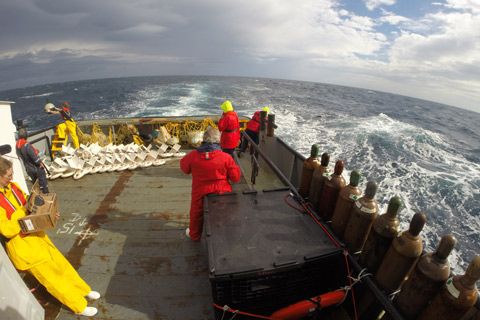 Many of the studies have been carried over the Deepwater Horizon site, using multiple ships and aircraft on research missions that can last as long as a month at sea. “All of the modelers and technicians would be in the field,” said Özgökmen. “Then we come back and analyze our data and plan for the next experiment.”
Many of the studies have been carried over the Deepwater Horizon site, using multiple ships and aircraft on research missions that can last as long as a month at sea. “All of the modelers and technicians would be in the field,” said Özgökmen. “Then we come back and analyze our data and plan for the next experiment.”
CARTHE scientists have come up with some intriguing study results—chief among them, the manner in which spilled oil spreads. “When there’s an oil spill, we think that the spill only spreads and gets bigger and bigger. But we’ve found that within that large-scale spreading, there’s also a lot of concentration going on,” said Özgökmen, noting that some of the oil is sucked down into black holes in the ocean.
The Navy, he said, is now studying what happens to material after it is sucked down into one of these oceanic black holes.
Here’s a look at some of the experiments that CARTHE, funded by the Gulf of Mexico Research Initiative, has conducted over the past eight years:
• The Grand LAgrangian Deployment, or GLAD, was the largest-scale experiment of its kind at the time. During August 2012, Brian Haus, professor of ocean sciences at the Rosenstiel School and director of the SUSTAIN wind-wave tank, and his research team deployed more than 300 custom-made drifters near the Deepwater Horizon site and Louisiana coast. The use of drifters in the experiment was essential in studying the complex surface ocean currents that transport pollutants.
• In 2013, not long after a fire erupted on the Hercules 265 drilling rig off the Louisiana coast, CARTHE researchers raced to the site, deploying 21 drifters around the rig to track the movement of surface ocean currents. Their goal: to predict where oil and gas would travel if it were spilled. “Luckily, no pollutants were released from the rig,” said Özgökmen, “but this was an amazing test of our ability to respond in an emergency situation.”
• How do oil and other toxins move from the Gulf of Mexico onto the beaches of Alabama, Florida, Louisiana, Mississippi and Texas? The Surfzone Coastal Oil Pathways Experiment, or SCOPE, sought to answer just that question. In late 2013, more than 30 CARTHE scientists conducted a three-week experiment, using GPS-equipped drifters, dye, helicopters, drones, balloon-kites, kites, Jet Skis, small boats, and other equipment to obtain as much data on near-shore wave and current movements.
• Building upon the vast amount of data they collected during the 2012 GLAD experiment. CARTHE researchers returned to the Gulf of Mexico in early 2016 to conduct the LAgrangian Submesoscale ExpeRiment, or LASER. The mission: to understand the small scale, temporary currents in the open ocean environment near the DeSoto Canyon and determine how oil and other pollutants might be transported via those currents.
• Scientists returned to the northern Gulf of Mexico in April 2017, this time near the Louisiana Bight, to examine how ocean currents transport oil and other particles across the shelf and onto shore. With 500 drifters released from the Rosenstiel School’s F.G. Walton Smith research catamaran, SPLASH (the Submesoscale Processes and Lagrangian Analysis on the Shelf), bridged the gap between the offshore observations from GLAD and LASER and the coastal observations from SCOPE.




 Many of the studies have been carried over the Deepwater Horizon site, using multiple ships and aircraft on research missions that can last as long as a month at sea. “All of the modelers and technicians would be in the field,” said Özgökmen. “Then we come back and analyze our data and plan for the next experiment.”
Many of the studies have been carried over the Deepwater Horizon site, using multiple ships and aircraft on research missions that can last as long as a month at sea. “All of the modelers and technicians would be in the field,” said Özgökmen. “Then we come back and analyze our data and plan for the next experiment.”
